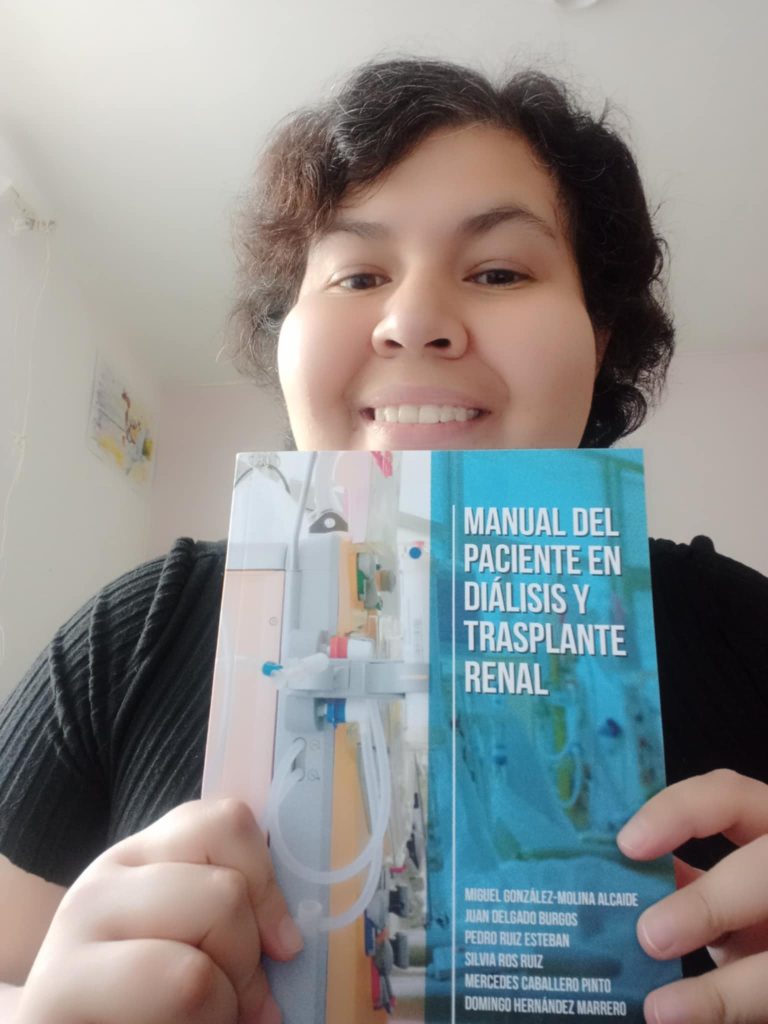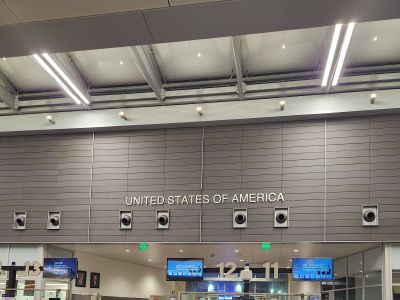
THE SIREN’S SONG (May third)
A reflection note on suicide in Brenda Navarro’s novel Ceniza en la boca
A FEW YEARS AGO, I wanted to publish a few pieces in a local newspaper from my hometown, Aguascalientes, about suicide. The editor-in-chief made it very clear that I should avoid falling into “apología.” I didn’t understand what she meant by “glorification,” so I left quiet. I never dared to write anything. Years later, I received a grant to write a book of poetry on suicide prevention. This time, I had taken steps to educate myself, even enrolling in a diploma program on self-harm and suicide prevention, and trying to join the Guardianes para la Prevención del Suicidio. I’m still completing the diploma, and I couldn’t afford the one offered by Guardianes. I read Lo que no tiene nombre and Daniel: voces en duelo with fervor.
Shortly before my kidney transplant, I gave my first talk to nursing students on poetry and mental health, specifically, on death by suicide. Months later, when I tried to give another talk on the works of Chantal Maillard and Piedad Bonnett at a government-run venue, they refused to include the word suicide on the flyers.
This silence around suicide is a double-edged sword. On one hand, it helps curb discourses that romanticize or glorify it. Conversely, for those who wish to speak about it differently, it leaves us voiceless in the world. On social media, algorithms flag any content that includes the word “suicide”, deleting it instantly or limiting its reach. Neither before nor now has it been easy to speak about suicide. Despite the passage of time and the accumulation of information online, we continue to perpetuate a culture of suspicion and fear around the topic. Because talking about suicide is seen as spreading it, invoking it, making it contagious.
Meanwhile, death by suicide—this ultimate consequence of a health condition that has not yet been recognized or interpreted as such—continues to happen underground. It is an illness that doesn’t fully exist, because it is invisible. Those who suffer from it go undiagnosed, untreated, and unsupported.
Casas vacías captivated me two years before Ceniza en la boca was published, I felt drawn to Brenda Navarro’s work. A few days ago, I learned that a film adaptation of Ceniza en la boca—her most recent novel, published three years ago—was in the works, and I decided to read it. I had no idea what it was about. In my post-transplant isolation, I’ve spent time watching movies and slowly reading books. I downloaded an audiobook app, downloaded the novel, and hit play while cleaning and cooking—grateful to reclaim the space that had been denied to me due to immunosuppression.
In this novel, no one is named except for Diego García, who has died by suicide, and his sister, who narrates the events leading up to and following his death. Both Diego and his sister migrated to Spain in search of better opportunities, only to find a reality far harsher than they expected, especially after trusting that conditions would be better there and that their mother had worked eight years abroad as a caregiver.
Displacement is everywhere: in a host country that looks upon them with disdain, and in their homeland, where people die or disappear amid chaos and drug-related violence. The narrator leads us, non-linearly, through Diego’s death and its aftermath, returning to Mexico to deliver his ashes—ashes she begins to eat, little by little, in an act of self-validation.
“Dejé ahí, en ese lugar, sus cenizas, mientras mis abuelos compraban una urna digna de mi hermano. Sentí enojo. Como si con la muerte de Diego me borraran a mí. (…) ¿Quién llorará por mí si todos están ocupados llorándote a ti? Eso pensaba mientras abría la cajita de madera y tocaba su ceniza. Un poco nada más, casi que sólo para mancharme los dedos. ¿Es este el destino que el mundo planeó para nosotros? Luego entró mi abuela y me preguntó si estaba lista para los rosarios. Por miedo a que me descubriera a Diego en las manos, me chupé los dedos.”
The novel addresses a dense array of themes: migration, violence in Mexico, anti-Latinx discrimination in Spain, critiques of women’s emancipation, and care work. As we saw in Casas vacías, it also touches on motherhood from a different angle: the narrator is forced to mother her half-brother while her own mother is abroad.
All of these threads are woven through the central event: Diego’s death by suicide. Yes, I insist on this phrasing: death by suicide. Because it changes everything. Saying death by suicide is like saying death by myocardial infarction or death by cardiac arrest. It is an outcome, a terminal point of an illness when it goes untreated. Though suicide is a common thread connecting all these social issues, the novel doesn’t dwell on it directly, except in a few scenes that hint Diego had therapy and, just before the crisis, tried to call his sister. But he didn’t have the words. Again: silence.
“Si tú pudieras saber el día que te vas a morir, ¿me lo dirías?
No, por supuesto que no, no seas loco, Diego.
¿Por qué piensas esas cosas?
Pero es por saber, me dijo. (…)
Pues nada, contestó.
Muack, muack, muack, le hice sonidos de besos burlones.
Pendeja, dijo, pero se le quebró la voz, lo alcancé a escuchar.
¿Qué pasa, Diego, te peleaste con mi mamá?
Y Diego sin poder hablar, con algo atravesado en la garganta, me imagino.
¿Estás llorando porque no vas a ir a ver a Vampire Weekend?
Y una breve risilla de mi hermano.
Pendeja, me dijo carraspeando la garganta.
Muack, muack, te amo, Ezra Koenig.
Y Diego, sonriendo, quiero pensar, quiero pensar que sí sonrió.
Ya me voy, pendeja, se despidió.
Vale, hablamos pronto. Colgamos.
Dos horas después volvió a sonar el teléfono, pero yo no lo escuché. Luego, de nuevo él y yo seguí sin oír su llamada. Dos llamadas más desde su teléfono se quedaron registradas en el mío. La cuarta vez que sonó ya no era mi hermano, sino un número desconocido que volvió a insistir muchas veces hasta que por fin vi la pantalla y contesté y me habló de Diego. No lo vi yo, pero como si lo hubiera visto, porque lo tengo taladrándome la cabeza y no me deja dormir. Siempre la misma imagen: Diego cayendo y el ruido de su cuerpo al impactar contra el suelo.”
The first time I thought about suicide, I was just a child. I wrote it in a diary. Over the years, those thoughts remained dormant until I received the diagnosis of an incurable illness: chronic kidney disease. From that point forward, suicide attempts—classified as self-harm—began piling up. I wanted to know: did it hurt that much to stop breathing? That question kept returning, especially before my first serious attempt, when I fled the city just days before I was scheduled to have a peritoneal dialysis catheter placed.
At the time, I had no idea something was wrong with me. It took me a long time to understand, and even now, I am still learning. I was capable of making logical decisions about my kidney treatment, but when it came to my mental health, I was lost. I used to post long, unfiltered updates on Facebook. Far from bringing people closer, they pushed them away. The crises were frequent, and suicide attempts continued. I went to therapy, I saw a psychiatrist, but paying for those consultations was difficult. It was even harder to manage while trying to survive in a rented home, the only place where I could set up a safe dialysis area.
I was living a kind of exile. I had to leave my family home to keep myself alive. Some things improved, but I also had to face injustices, burdens, and responsibilities. At one point, a very well-known writer from my city—someone who has spoken publicly about her bipolar disorder—had the generosity to ask me a question no one else had asked: “Don’t you think you might also be a patient of the mental health system?”
Suicide in literature is rarely treated from a clinical perspective. It’s often portrayed as fate, as a well-thought-out decision, as a form of freedom or courage, or, depending on the narrative, as an act that verges on glorification. In Ceniza en la boca, Diego’s sister justifies his suicide. She even suggests he was the only one brave enough to make a decision:
“Y no lloré, ni me dieron ganas de llorar. De pronto, así, acompañada, justifiqué a Diego, abracé su decisión. No había toda una vida por delante, al contrario: migajas, piezas de rompecabezas sueltas, un reloj con el tic tac avanzando y una serie de acontecimientos abollados, encimados los unos de los otros sin rumbo fijo. Nada de vida por delante, ni para Diego, ni para mí. Al menos mi hermano tuvo la claridad de verlo y tomar el riesgo de ser el único que decidía sobre su destino.”
As part of my writing project, one thesis that especially caught my attention came from the field of philosophy. It analyzed the impact of writing and literature on mental health. In recent decades, scholars have explored how narrative structures the self, the individual, and our inner language. Words carry more weight than we think—and they break barriers. We say “suicide,” we say someone “committed suicide,” and we frame it with words like “cowardice,” “bravery,” “a way out,” “the easy way,” or “the false door.” But we seldom name it for what it truly is: an illness, a health condition, a diagnosable and treatable disorder. In this thesis, the author concluded that writing can indeed have a positive effect on patients—but also a negative one. For patients with comorbid diagnoses or those using psychoactive substances, writing may reinforce limiting or irrational beliefs and contribute to the creation of self-fulfilling prophecies.
But when suicide is framed as a clinical narrative—as something treatable—it ceases to be a tragic, inevitable fate. Possibilities begin to emerge. There may not always be a cure, but there is survival. One lives with the illness.
Piedad Bonnett’s approach is testimonial and, perhaps, the one that comes closest to understanding the reality we face as mental health patients. Brenda Navarro’s approach is more sociological—which is also important. We must acknowledge the inhuman living conditions that contribute to mental health crises. But how are we—those labeled suicidal—supposed to fight for a better world when we can’t sleep, or sleep 18 hours a day? When we can barely get out of bed?
Yes, it’s crucial to denounce the systems that oppress us. But we also need narratives of survival, of resistance from within illness.
Lately on social media, I keep seeing posts circulating from one profile to another—declaring, with certainty, that mental illnesses are products of social inequality, and that psychiatric medication is used to silence those who speak out against injustice. Personally, I find these statements unfortunate and reductive—especially since I’ve seen the author herself repeat them in interviews. It’s not untrue that social context plays a role in mental illness. But it’s only one factor among many.
The belief that mental illness is only a product of oppression erases the genetic and physiological factors that also trigger it. Why should acknowledging a matrix of oppression deny the existence of mental illness, of a chemical imbalance, of dysfunctional behavioral patterns? Both things can exist at once—and survival involves dealing with both.
The term pill shaming has been around for some time. It refers to the stigmatization of psychiatric medication, which makes treatment even less accessible. In a conversation with my psychiatrist, he told me that sometimes a person could have stayed alive—if only they had access to the right meds. But they never even got a diagnosis. He also told me that my case was extraordinary among transplant recipients—because typically, patients with a history of suicide attempts are ruled out immediately. It’s easy to guess what doctors think: If this person wants to die, how can I trust them with a kidney?
The slippery slope in suicide discourse is believing that someone who attempts suicide wants to die. During my first years with kidney disease, I entered several transplant protocols with potential living donors. Studying organ donation taught me something crucial: a donor must be of sound mind. Donating an organ is an informed, conscious decision. Doctors explain everything to the donor—the tests, the risks, the lifelong implications. But a person exhibiting suicidal behavior is not making a rational choice. They’re reacting in despair, trapped in a world that doesn’t hear or understand them.
When people approach me for help with students or loved ones experiencing suicidal ideation, I always say the same thing: They don’t want to die. They want the pain to stop. Don’t minimize their feelings. But don’t ignore the warning signs either.
In Mexico, people wait an average of ten to fourteen years to get a mental health diagnosis. Why? Because they doubt themselves. Because others tell them they’re exaggerating. Because those closest to them say, You just need to relax, You’re being dramatic, Try distracting yourself. Because there are hardly any psychiatrists or psychologists in the public healthcare system. Because some insist that medication is just a way to keep people sedated and docile. Because others say psychiatric meds are addictive.
In that sea of misinformation, we—the misnamed suicidals—move blindly through the world, growing more and more convinced that the only way to stop the pain is to die.
And now, to top it all off, there’s the added stigma of being told we don’t even have a legitimate illness—that it’s just the residue of systemic oppression. Of course capitalism affects my mental health. But it’s not enough to simply know that.
Deaths by suicide, like deaths from diabetes, hypertension, or other chronic conditions, must be addressed with clarity. It’s not just necropolitics that harm us. Our bodies, too, fail. And we survive—not just in spite of the system, but within it.
I need my alprazolam in order to listen to another patient, to explain what hyperparathyroidism is, or what parathyroid hormone does, or to guide someone through how to defend themselves in a medical setting. That is my way of contributing to making this world better. I take my medication. I go to therapy. I share phone numbers and addresses of mental health centers that offer free or low-cost care. That is my activism. And if I’m not stable, I can’t do any of it.
Brenda Navarro says suicide is “un grito no proferido, una verdad pérdida.” From asking ¿por qué lo hizo? came a novel full of interior monologues—disturbing, devastating, impossible to walk away from. Sociological frameworks are necessary. But I hold on to the hope that one day there will be more poems and stories written in the first person that share words for life. Even though, like any illness, we must make room for death as a possible outcome. As happened with Daniel, the son of Piedad Bonnett.
In 2022, I tried to jump off a bridge. Two people stopped me. They sat me down and called the police. I ended up in a holding cell, surrounded by urine and nausea. They cuffed me to a patrol car. They mocked me for crying.
Eventually, they took me where I should have gone in the first place: a mental health center, where I received an emergency therapy session. I was already on medication. I still am. But most of my treatment has been psychological.
I’ve taken the time to share my story publicly—as someone who attempted suicide seven times—and to share accurate, responsible information on the subject. It’s true that the Werther effect (the risk of contagion through media portrayals of suicide) has contributed to the silence and stigma surrounding the issue. But there is also the Papageno effect—stories that prevent suicide by sharing hope, treatment options, and survival strategies, often coming from survivors themselves.
My last attempt was in December 2023. I opened my hemodialysis catheter and let myself bleed. I spent several days in the hospital until my hemoglobin levels were stabilized.
One year later, I found myself at home, newly transplanted, urinating again after years without being able to. I was calm. Even though prednisone increases anxiety and depression, my transplant psychiatrist took care to regulate my immunosuppressive medication to avoid hallucinations and intense episodes.
It’s been over a year since I’ve had suicidal thoughts. Sometimes, I read my old journals and I can’t believe how far I’ve come. It has been a long, long road.
But I’m still here.

Arely Jiménez (Aguascalientes, 1992) is a poet, feminist, and kidney patient. She has published poetry collections such as Madre Piedra y otros poemas (UAA, 2019), La noche es otra sombra, Metamorfosis de la O (Sangre Ediciones, 2020), and SiRenal (Arde Editorial Chihuahua, 2023). In 2021, she received an Honorable Mention in the 39th National Prize for Young Literature “Salvador Gallardo Dávalos” in the narrative category for her book Los árboles no son tan altos de noche.
Social media: @soyarelyjimenez
Translation and background photo by Yasmin Rojas





